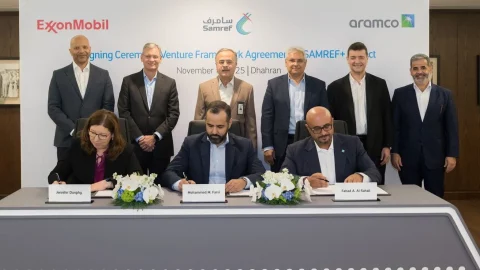Natural gas has proven to be the cleanest fossil fuel and the primary source of power for renewable energy. With that, improving production and transportation techniques are becoming more crucial than ever to cover the fast-growing demand. Guaranteeing pipelines’ safety and enhancing their operation process became an important aspect to guarantee efficient and safe transportation of this essential fuel. Ultrasonic Testing (UT) is not a new solution, but it remains the most common, successful, and effective technique in this regard.
How it Works
According an article published by Flyability, ultrasonic testing is one of the non-destructive testing solutions used by inspectors to identify if there is any flaw or defect that may occur in a material and to determine its thickness. This technique is working by sending ultrasonic waves through an object or material. The article mentioned that ultrasonic testing is also called Ultrasonic Thickness Measurement (UTM), Ultrasonic Thickness Testing (UTT), or Sonic Testing (ST). This method is usually used on metals, as metals can make sound waves, which helps in the measurement process. So, that it is an optimum method for pipeline inspection.
There are three primary methods for UT. It could be done through transmission in which two transducers are put in opposite sides of the object. When there is an error, the signal amplitude is reduced or may be totally lost in case of gross defects.
Pulse Echo is another method for UT and is more sensitive than the transmission method. Thus, Pulse Echo is the most used in event of inspections. In this method, the two transducers are placed in the same side of the object. When a defect occurs, an echo takes place before that of the back wall echo.
The third method is known as the Resonance method, which is similar to the pulse echo method. The only difference is that it allows changing the regularity of the transmission and it is commonly used when only one terminal of the object is accessible.
Innovative Types
The latest inventions of the UT include seven types, according to Modsonic. The automated Ultrasonic Backscatter Technique is applied to detect “damage due to High-Temperature Hydrogen Attack (HTHA). This technique specifically is used in piping and pressure vessels.” It can provide an A-Scan display with frequency analysis.
The second type of UT is Phased Array Ultrasonic Testing (PAUT). This technique consists of probes with several small-sized elements ranging from 16 to more than 250 at a time. “These elements can pulse individually in PAUT equipment. This is achieved through computer-calculated timing, which is called phasing,” according to Modsonic article.
Furthermore, the third technique is Long Range Ultrasonic Testing, which is used for “testing large amounts of materials from a singular testing point. This takes place by putting transducer rings around a pipe in a uniform manner. The rings emit a series of low-frequency guided ultrasonic waves”.
Internal Rotating Inspection System is another technique used to inspect any corrosion in pipes and tubes by inserting an inspector inside them, which sends ultrasonic waves. Moreover, Dry-Coupled Ultrasonic Testing (DCUT) is a cheap technique for detecting metallic and nonmetallic objects. Also, there is a technique called Time of Flight Diffraction (TOFD), which is used to inspect welds.
The seventh technique is the Rapid Ultrasonic Gridding (RUG) method, which is used to measure thickness through ultrasonic waves. This technique can “capture multiple A-Scan data points more quickly than other traditional thickness measuring methods.”
UT Usages in Oil & Gas
UT has a crucial role in the oil and gas industry. It is beneficial within all phases, starting from upstream to downstream activities, especially in pipeline inspection to keep the safety of the operations and help in meeting the growing demands. The most common methods used in the oil and gas industry are PAUT and TOFD.
According to Zetec, UT is used in “inspecting important assets before they are put on a production line like riser welds, the quality of corrosion resistant alloys (CRAs), and the long stretches of generic welds on drilling pipes.” UT technology can perform accurate detection at high speeds, which enables technicians to keep up with the large volume of generic welds before and during service.
Also, it allows inspectors to detect corrosion in the cladding that protects the pipeline, the welds on storage tanks, and the integrity of each pipe before it is put on stream, which enables oil and gas companies to operate without worrying about serious spills or breakdowns. Hence, UT is an enabler for more technologies’ utilization and expansion in the fields, as well as enhancing safety, increasing efficiency, and reducing costs.








